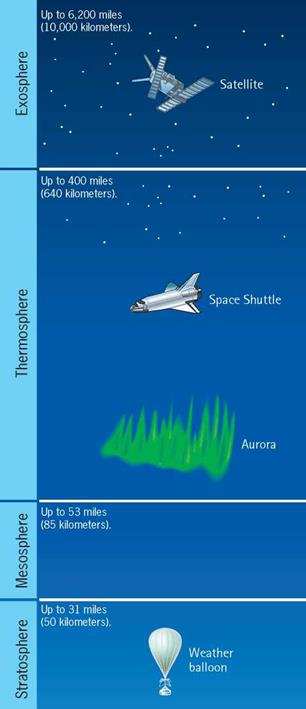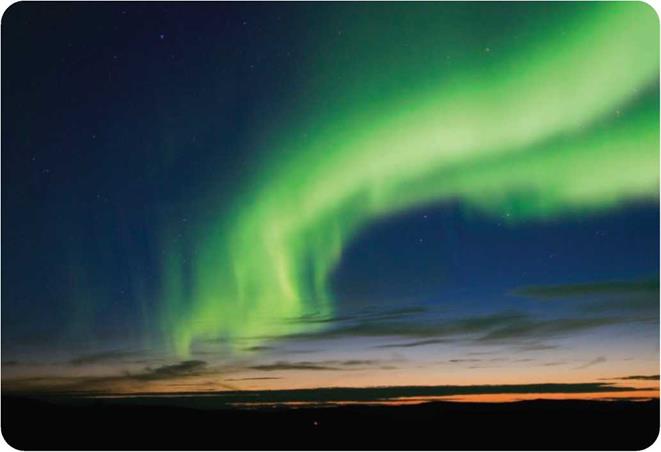The Upper Atmosphere
The uppermost layer of the atmosphere is the thermosphere. It stretches from the top of the mesosphere up to a height of about 400 miles (640 kilometers). Temperature levels rise dramatically in the thermosphere, up to approximately 3630°F (about 2000°C).
|
|
THE OZONE HOLE
Some of the chemicals we use, especially chlorofluorocarbons (CFCs), damage the ozone layer by breaking down the ozone. In the 1970s, scientists found a hole forming in the ozone layer over the South Pole. Measurements made by satellites confirmed this in the 1980s. To save the ozone layer, CFCs were banned by most countries. New measurements show that the damage is slowing down, although it may take up to 100 years for the ozone layer to recover completely.

 v
v
A spectacular light display sometimes occurs in the thermosphere. Near the North Pole, the light patterns are known as the northern lights, or aurora borealis. The southern lights, or aurora australis, are seen near the South Pole. Auroras are caused by particles of energy from the Sun. These particles stream through space past Earth. The Earth’s magnetism pushes them away everywhere except at the poles. As the particles dive into the atmosphere, they crash into gases in the thermosphere and create a glow.
Outside the atmosphere, the last remaining wisps of gas form the exosphere. This may extend to about 6,200 miles (about 10,000 kilometers) from
Earth. The gases in this layer are mainly hydrogen and helium. The exosphere is so thin and the Earth’s gravity has such a weak hold on it that the gas particles can escape into space.
The thermosphere and exosphere contain part of the atmosphere known as the ionosphere. This layer contains particles with an electrical charge called ions. Some radio signals bounce off the

О The northern lights, or aurora borealis, occur in the thermosphere, the atmosphere layer that lies between 53 miles (85 kilometers) and 400 miles (644 kilometers) from Earth’s surface. The colorful ribbons and clouds of light can be seen regularly in northern regions of the world.
 |
ionosphere. They can travel long distances around the world by bouncing between the ground and ionosphere over and over again. Very short radio waves pass through the ionosphere instead of bouncing off it. These radio waves can be used to communicate with spacecraft.










